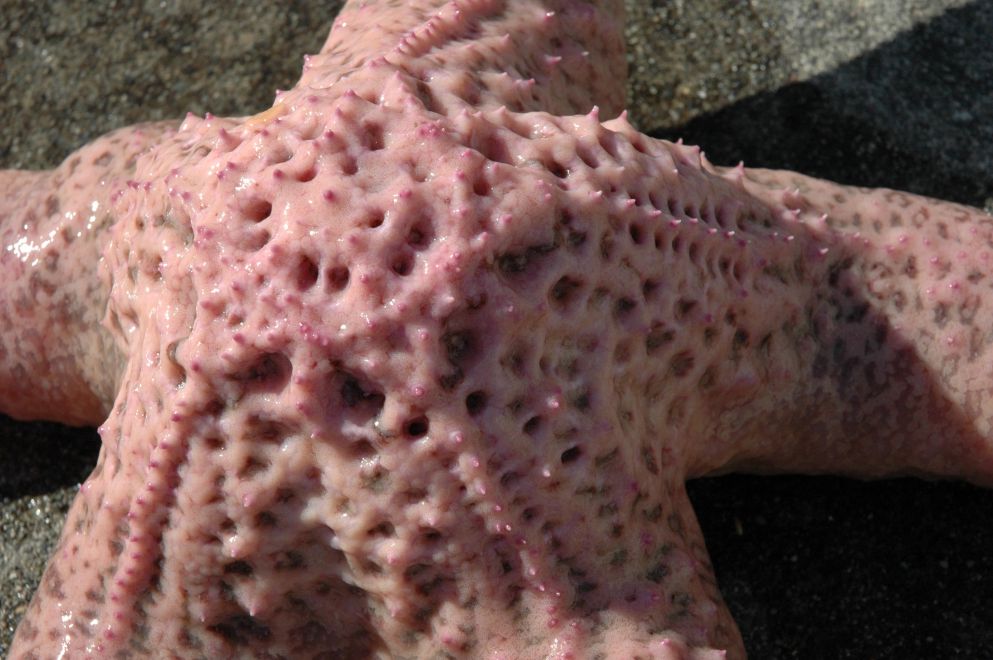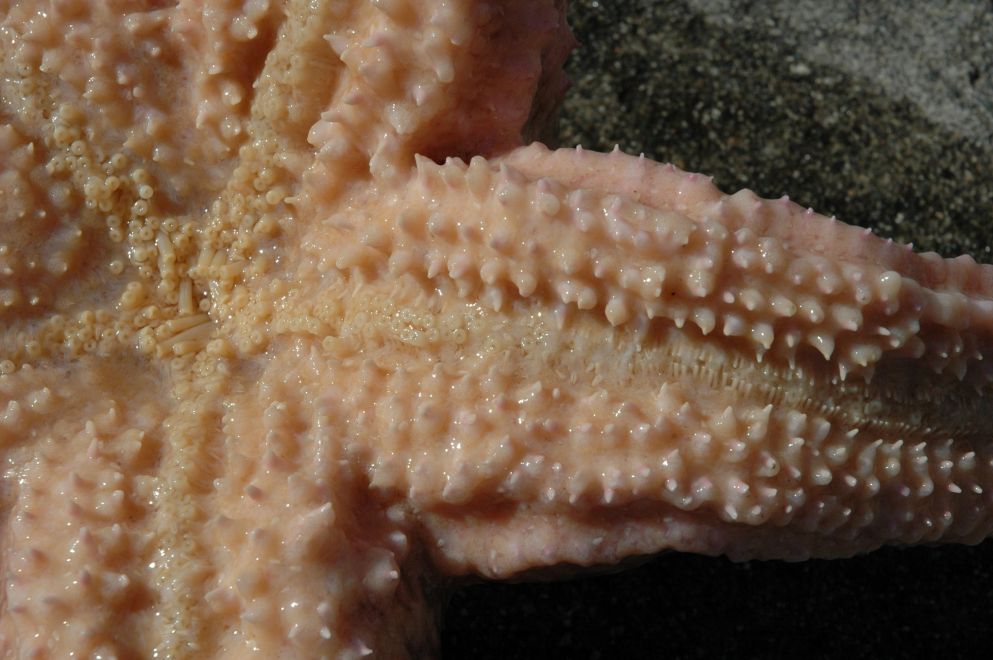Pisaster brevispinus (Stimpson, 1857)Common name(s): Short-spined sea star, Giant pink star |
|
| Synonyms: |  |
| Phylum Echinodermata
Class Asteroidea Order Forcipulatida Suborder Aseriadina Family Asteriidae |
|
| Pisaster brevispinus, found off Northwest Island, Rosario Bay. Ruler is 12 inches (30 cm). | |
| (Photo by: Dave Cowles, July 2005) | |
How to Distinguish from Similar Species: Pisaster ochraceous usually does not grow larger than 25 cm and may be ochre, brown, orange, or purple, plus its aboral spines are in a network. Evasterias troschelii has rays which are thickest just beyond their junction with the central disk and may be many colors, but is unlikely to be pink.
Geographical Range: Sitka, Alaska to La Jolla, CA
Depth Range: Very low intertidal (rarely) to 110 m. More common in bays than on the open coast.
Habitat: Sandy, muddy, or occasionally rocky bottoms or pilings
Biology/Natural History: Prey includes mainly bivalves, including Clinocardium cockles, butter clams, littleneck clams, and geoduck clams; but also snails, sand dollars, barnacles, and tubicolous polychaetes; may scavenge dead fish and squid. The purple olive snail Olivella biplicata shows a strong escape response to this species (it buries itself), as does the sand dollar Dendraster excentricus. Known to feed on small Dungeness crabs in California. May fight with Pycnopodia helianthoides over food if they both encounter it. The tube feet next to the mouth can be extended many centimeters (up to the seastar's redius) to pull up bivalves from the sediment. May also dig in sediment after prey, which may take several days. The stomach may be everted up to 8 cm to digest prey in the shell. Spawns in spring and summer in Washington. A small snail, Balcis rutila, may be embedded in the body wall. A smaller subspecies (P. brevispinus subsp. paucispinus) lives in Tomales Bay in eelgrass, and has fewer spines.
| Return to: | |||
| Main Page | Alphabetic Index | Systematic Index | Glossary |
References:
Dichotomous Keys:Flora and Fairbanks, 1966
Kozloff 1987, 1996
Smith and Carlton, 1975
General References:
Brusca
and Brusca, 1978
Gotshall,
1994
Gotshall
and Laurent, 1979
Harbo,
1999
Johnson
and Snook, 1955
Kozloff,
1993
Morris
et al., 1980
Niesen,
1997
O'Clair
and O'Clair, 1998
Sept,
1999
Scientific
Articles:
General Notes and Observations: Locations, abundances, unusual behaviors:
This species is not very common right near Rosario. It seems to be more common in the Guemes Channel, and is very common on the tire reef at Langley on Whidbey Island.

This subtidal seastar frequently has its papulae out, which makes the
rays appear smooth and gelatinous as seen here. The aboral
ossicles
form spines which are single, clustered, or in a network.
Photo by Dave Cowles, July 2005

There are no large marginal plates on the rays. A row of
small
spines can close over the ambulacral grooves.
Photo by Dave Cowles, July 2005
Authors and Editors of Page:
Dave Cowles (2005): Created original page